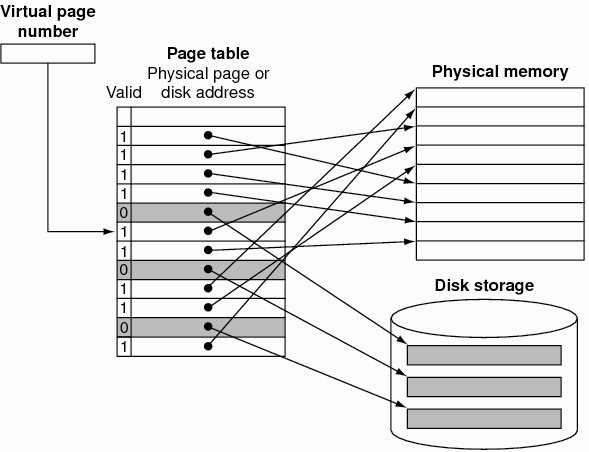Search here

22-Dec-2022
What is the purpose of paging the page tables
As we head into the age of digital technology, it’s important to understand the basic concepts that make up computer systems and how they work. One such concept is paging the page tables, which is a vital part of any system that seeks to efficiently store and manage data. In this blog post, we will discuss what paging the page tables is and why it is so important for better organization of data in computers. We will also discuss the different methods used to set up and access page tables in different operating systems, as well as their relative advantages and disadvantages. Read on to learn more about this essential part of computing!
What are page tables
- Paging is a mechanism for breaking up a large data structure into smaller pieces that can be easily managed. Page tables are the data structure used to keep track of the pages in memory. Each entry in a page table contains information about a single page, including the address of the page and its size.
- When paging is enabled, the operating system uses the page table to divide the physical memory into equal-sized chunks called pages. The size of a page is typically chosen to be a multiple of the processor's word size, so that each page can be easily read or written by the processor.
- When a process requests data from memory, the operating system first checks to see if the requested data is contained in a page that is currently in memory. If so, the data is retrieved from memory and returned to the process. If not, the operating system must retrieve the requested page from disk and then return it to the process.
- The main advantage of paging is that it allows processes to use more memory than is physically available on the system. By keeping only those pages that are currently needed in memory, paging allows multiple processes to share physical memory and makes efficient use of limited resources.
How do page tables work
- Paging is a process in which the operating system (OS) stores and retrieves data from memory in small blocks called pages. When paging is enabled, the OS divides the physical memory into equal-sized pages and maps logical address spaces to these pages. The page table is a data structure that the OS uses to store information about the mapping of logical addresses to physical addresses.
- The page table is usually divided into two parts: the upper part, which contains the entries for pages that have been recently accessed or are currently being used; and the lower part, which contains entries for pages that have not been used recently.
- When a process tries to access a page that is not in the upper part of the page table, a page fault occurs. The OS then looks up the page in the lower part of the table and adds it to the upper part. If the requested page is not in either part of the table, a hard page fault occurs, and the OS must fetch the page from disk.
Paging page tables can have numerous benefits for both the system and the user. For the system, paging reduces the amount of time spent searching for a specific piece of data in memory. This can free up resources and improve performance. For the user, paging allows for a more customized experience. Paging page tables can provide the user with information that is relevant to them, which can save time and make the overall experience more efficient. Additionally, paging can help to reduce wear and tear on hardware components, as it eliminates unnecessary read/write operations.
Drawbacks of paging page tables
Paging page tables can have several drawbacks, including:
-Increased overhead due to the need to access multiple pages of memory to find a particular piece of information.
-The potential for decreased performance if the pages containing the page table are not located close together in memory.
- fragmentation of memory, which can lead to wasted space and increased wear on the system's memory components.
Conclusion
Paging the page tables is essential for virtual memory management, and its purpose is to translate logical addresses into physical ones. The advantage of paging the page tables is that it allows for a more efficient use of memory resources, as well as providing better performance when it comes to transferring data between different processes or programs. With this technique in place, computers can run faster and smoother than ever before.

SEO and Content Writer
I am Drishan vig. I used to write blogs, articles, and stories in a way that entices the audience. I assure you that consistency, style, and tone must be met while writing the content. Working with the clients like bfc, varthana, ITC hotels, indusind, mumpa, mollydolly etc. has made me realized that writing content is not enough but doing seo is the first thing for it.
Join Our Newsletter
Subscribe to our newsletter to receive emails about new views posts, releases and updates.
Copyright 2010 - 2025 MindStick Software Pvt. Ltd. All Rights Reserved Privacy Policy | Terms & Conditions | Cookie Policy